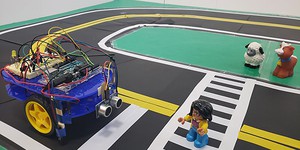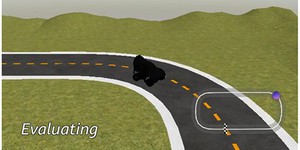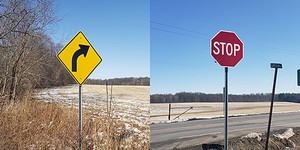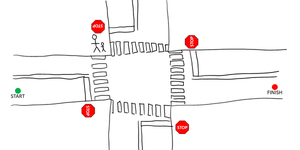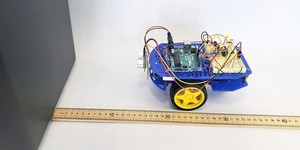Fifth Grade, Self-Driving Cars Science Experiments (7 results)
Fun science experiments to explore everything from kitchen chemistry to DIY mini drones. Easy to set up and perfect for home or school. Browse the collection and see what you want to try first!
Self-driving cars, also called autonomous vehicles or driverless cars, are cars and trucks that can understand and navigate the environment with little to no help from a human driver. While consumers cannot yet buy a car that fully drives itself (Level 4 or 5 automation), the technology is under development and improving quickly. The self-driving cars being worked on today have many different sensors and cameras to capture information about the world and rely on computer vision, machine learning, and many other programs to interpret and react to that information. The goal is to create cars that are safe, perhaps even safer than human drivers, and efficient.
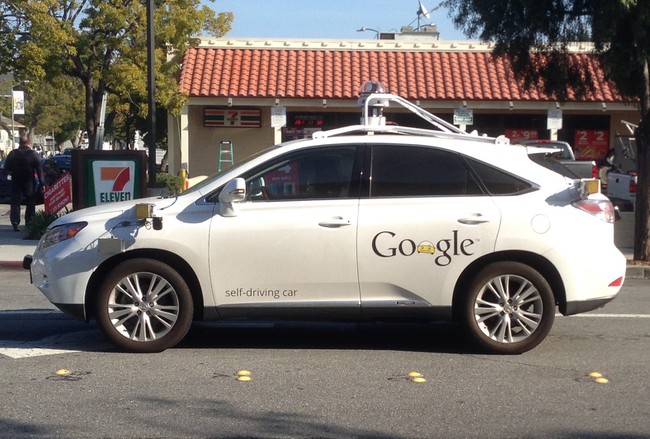
The many sensors and cameras needed to gather information about the environment during autonomous driving can easily be seen on this self-driving car prototype from Google. (Photo credit: Ed and Eddie)
There are five different levels of automation:
- Level 0: No automation; a human does all the driving.
- Level 1: An advanced driver assistance system (ADAS) helps a human driver by either steering or braking/accelerating in simple situations like when using adaptive cruise control.
- Level 2: An ADAS does a lot of the steering and braking/accelerating, but a human driver needs to be ready to take over at any moment.
- Level 3: An automated driving system (ADS) is capable enough of driving the car in limited situations that a human driver can safely do other tasks (like text or watch a movie) until the car signals that the human driver should take over.
- Level 4: An ADS controls all of the driving, and no driver is needed, but the car can only operate in a limited geographical area. The self-driving car acts like a robotic taxi.
- Level 5: No human driver is needed, and the ADS can safely operate the driverless car regardless of location, weather, and time of day.
|
Select a resource
Sort by
|
How do self-driving cars stay on the road? How do vehicles with autonomous or driver-assist features automatically brake, steer around obstacles, or perform tasks like adaptive cruise control? Experiment with these behaviors and more in this science project as you build and program your own autonomous Arduino robot.
Read more
How do you design a program that can pilot a self-driving race car? By using machine learning. In this project, you will train your own machine learning model for an autonomous vehicle, the AWS (Amazon Web Services) DeepRacer. You can run your car's machine learning model on a simulated racetrack (Figure 1), or you can purchase a
1/18 scale model vehicle
that can race on a physical track (Figure 2).
Figure 1. Screenshot of the virtual racing environment.
…
Read more
STEM Activity
13 reviews
How do driverless cars know how to recognize different road signs? They use something called machine learning. In this activity you will teach a computer to recognize different road signs using photos that you take yourself and a tool called Teachable Machine by Google®. The better the training data, the more accurately the program will be able to recognize different types of signs.
Read more
Driverless cars use machine learning, a type of artificial intelligence, to identify road signs and other things they encounter on the road, like pedestrians and other vehicles. In this project you will take your own pictures of different types of road signs and use machine learning to identify the signs using a free online tool (no programming is required). You will then attempt to improve your machine learning model so it can identify signs in a variety of environments.
Read more
STEM Activity
16 reviews
How do driverless cars know what to do at an intersection? How do they know when they should stop and when it is their turn to go? What about yielding to pedestrians? In this activity, you will write your own algorithm, or list of steps, for a driverless car to follow when navigating through various road scenarios like stop signs, traffic lights, and roundabouts (traffic circles).
Read more
How fast can a human driver react and hit the brakes when there is an obstacle in the road? Can autonomous cars react more quickly and make the road safer for everyone? In this project you will build your own Arduino robot and test human braking versus automatic braking as the robot drives toward an obstacle at full speed.
Read more
Self-driving cars use a variety of sensors to evaluate and navigate their environment. Each type of sensor has advantages and disadvantages. In this project you will evaluate two common types of distance sensor (ultrasonic and infrared) and compare their performance in different scenarios.
Read more
|
Explore Our Science Videos
How Far Can a Sneeze Go?
Change the Reaction Rate of a Foaming Reaction
Delayed Release Pill Challenge



